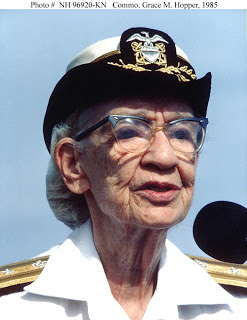The handheld and the tablet, circa 1976
 Let’s talk about the HP-67 and HP-97 programmable calculators.
Let’s talk about the HP-67 and HP-97 programmable calculators.
Introduced in 1976, both those models hold place of pride in my collection of vintage computation devices – which consists of a tremendous number of older Hewlett-Packard and Texas Instruments calculators, as well as dozens of slide rules going back to the late 1800s.
The four-function pocket calculator was the feature phone of its era. Arriving in the early 1970s, they swiftly replaced adding machines. The HP-35 calculator (1972) with its trig, log and exponential functions, singlehandedly killed the slide rule industry.
Programmable calculators with persistent removable storage – specifically Hewlett-Packard’s HP-65 (1974) and Texas Instruments’ SR-52 (1975) – were the equivalent of the first smartphones. Why? Because you could store and load programs on little magnetic cards. You could buy pre-written packs of programs on those cards from HP and TI. There were user groups where calculator programs could publish and share programs. And there were even a few commercial developers who sold programs on cards as well.
Some of my earliest published programs were written for HP and TI calculators in the mid-1970s. A foundational part of my own history as a computer scientist was learning how to do some pretty sophisticated work with only a few hundred bytes of addressable memory. Not megabyes. Not kilobytes. Bytes.
In modern terms, we would call calculator programs distributed on mag cards “apps.” The HP-65 Users Library and the TI PPX-52 (Personal Program Exchange) were among the first app stores.
This brings me to the HP-67 and HP-97, which were introduced simultaneously at prices of US$450 and $750, respectively. They were essentially the same device – except that the HP-67 was a 0.7-pound pocket calculator and the HP-97 was a 2.5-pound battery-powered desktop model with a built-in thermal printer.
“Calculator” is probably the wrong word for these devices. They were portable computers – in fact, they were truly personal computers, albeit with a custom microprocessor, one-line numeric display and only 224 bytes of programmable memory.
Although the form factors and key placement were different – and the HP-97 had the printer – both used the same programming language. Both models had a mag-card reader – and a program written on one could be used on the other without modification. This was unique.
In modern terms, the HP-67 and HP-97 were like handhelds and tablets sharing the same apps, like the iPhone and iPad, or Android phones and tablets.
No matter how far we’ve come, we’ve been here before.


